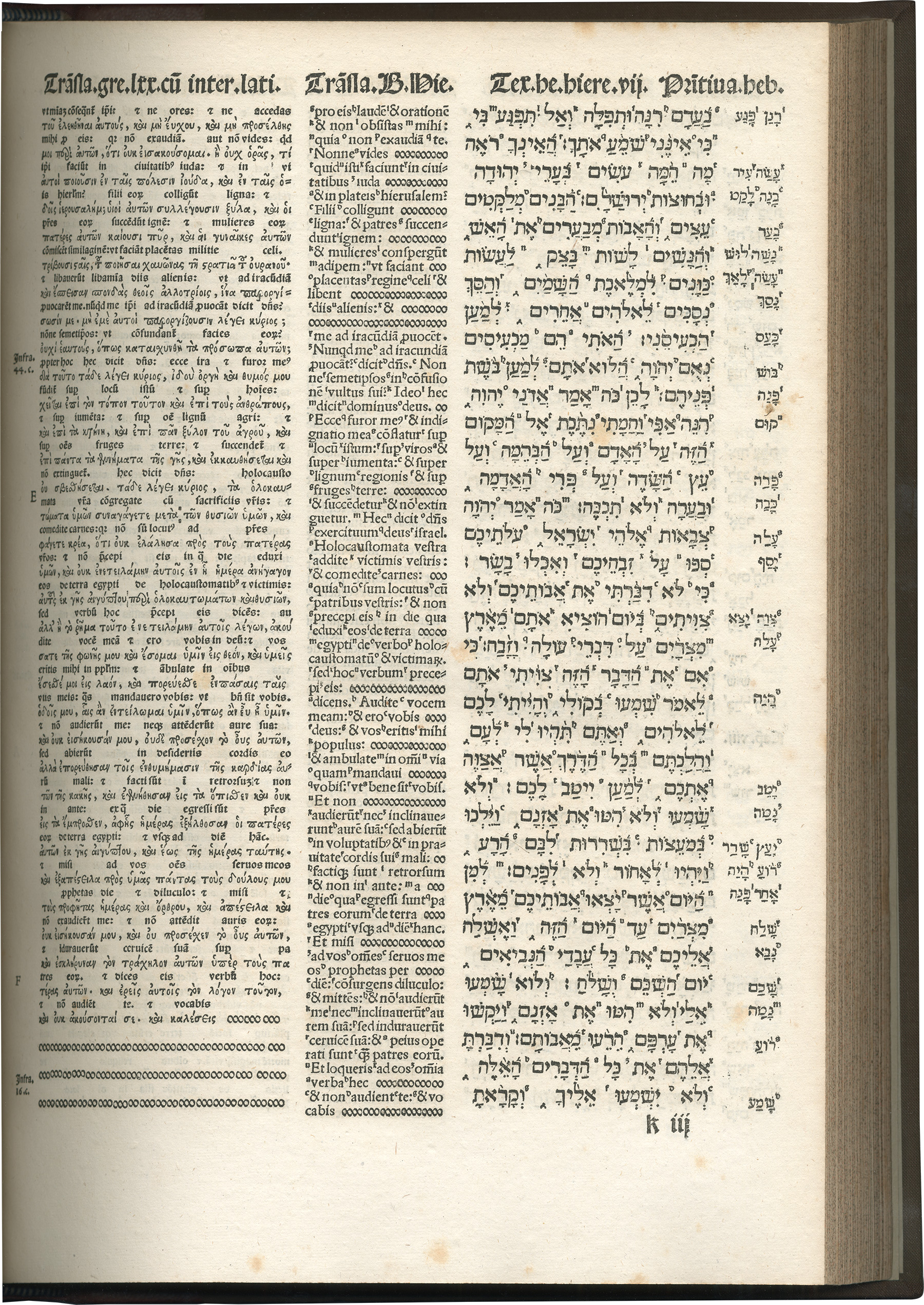The first editorial monument of early modern polyglot philology is the so-called Complutensian Polyglot Bible (ca. 1502-1517, only released after 1520) in six volumes, of which the library at the Herbert D. Katz Center for Advanced Judaic Studies possesses a complete copy. This complex biblical edition was the brainchild of Cardinal Francisco Jiménez de Cisneros (1436-1517), the leading churchman in Spain at the turn of the sixteenth century.
Modern scholars have traditionally described the editorial choices in the Complutensian Hebrew, Aramaic and Greek texts as a compromise by the Complutensian philologists with Jerome's (Latin) Vulgate, also printed in this bible. Hebrew, Aramaic and Greek texts would have been modified to make them match Jerome's translation. The texts as found in the Complutensian challenge this assumption. For instance, Jeremiah 7:18, ". . . to make cakes to the queen of heaven" reads the same both in Jerome and in the Hebrew Bible. But the Complutensians innovate with a completely different reading, supposing a form "mele'khet," with an aleph ("assignment; task") instead of "melekhet" ("queen"), thus understanding: "to make cakes for a heavenly assignment"
